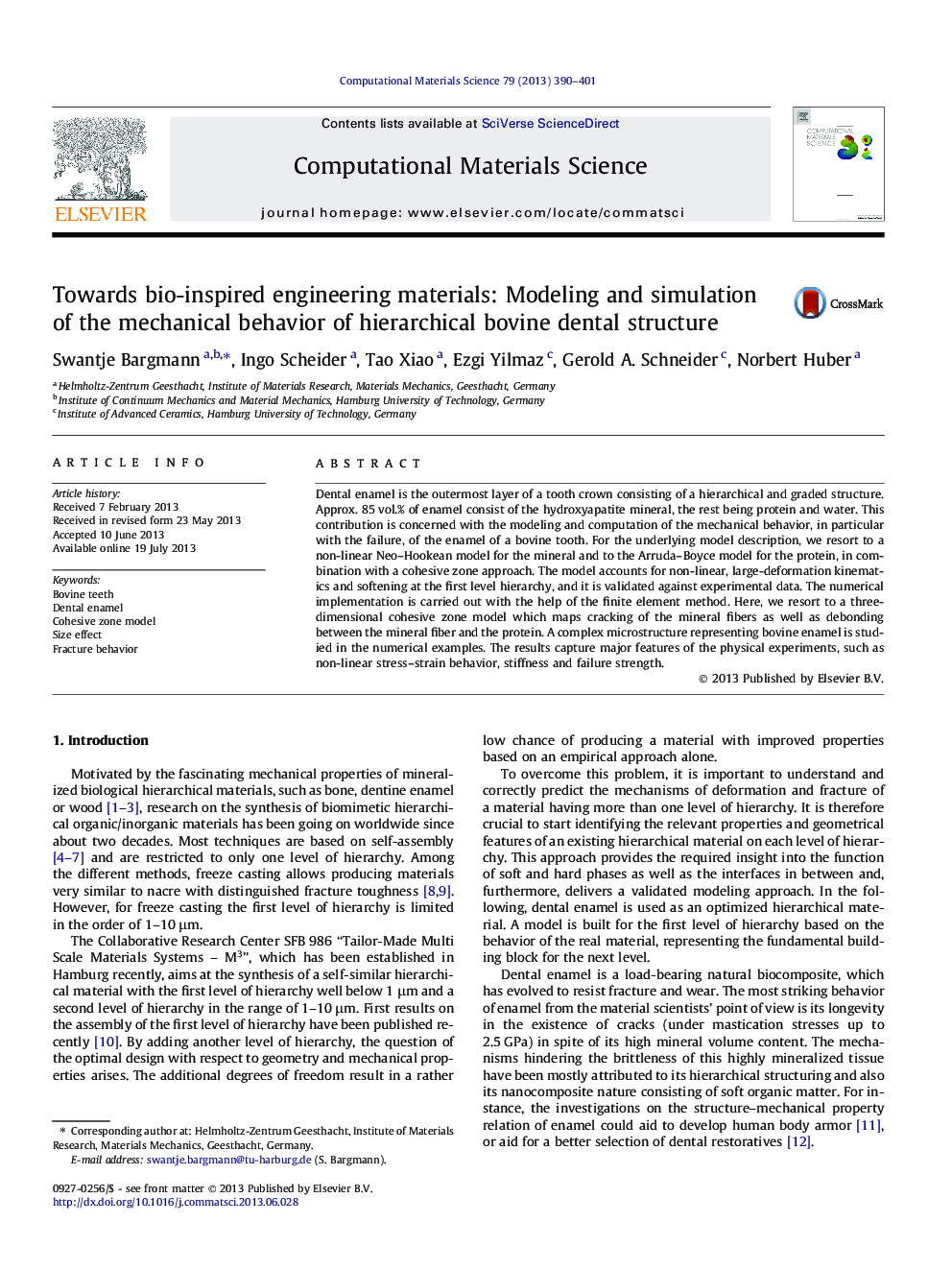| Article ID | Journal | Published Year | Pages | File Type |
|---|---|---|---|---|
| 7961532 | Computational Materials Science | 2013 | 12 Pages |
Abstract
Dental enamel is the outermost layer of a tooth crown consisting of a hierarchical and graded structure. Approx. 85Â vol.% of enamel consist of the hydroxyapatite mineral, the rest being protein and water. This contribution is concerned with the modeling and computation of the mechanical behavior, in particular with the failure, of the enamel of a bovine tooth. For the underlying model description, we resort to a non-linear Neo-Hookean model for the mineral and to the Arruda-Boyce model for the protein, in combination with a cohesive zone approach. The model accounts for non-linear, large-deformation kinematics and softening at the first level hierarchy, and it is validated against experimental data. The numerical implementation is carried out with the help of the finite element method. Here, we resort to a three-dimensional cohesive zone model which maps cracking of the mineral fibers as well as debonding between the mineral fiber and the protein. A complex microstructure representing bovine enamel is studied in the numerical examples. The results capture major features of the physical experiments, such as non-linear stress-strain behavior, stiffness and failure strength.
Related Topics
Physical Sciences and Engineering
Engineering
Computational Mechanics
Authors
Swantje Bargmann, Ingo Scheider, Tao Xiao, Ezgi Yilmaz, Gerold A. Schneider, Norbert Huber,
